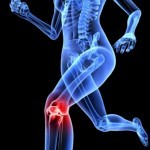 By Dr. Paul Jerard, E-RYT 500, YACEP
By Dr. Paul Jerard, E-RYT 500, YACEP
Understanding Yoga anatomy is critical to understanding the benefits and risks of practicing. For teachers, this is a deep analysis of Yoga asanas and pranayama techniques. The study of human anatomy will teach you about the organization and intricate functioning of the body. This includes the human skeleton, muscles, internal organs, ligaments, tendons, and cartilage. The purpose of Yoga anatomy has always been to improve class safety. A teacher’s understanding of the subject requires hours of study.
Foundation of Knowledge
A good Yoga instructor will have a firm foundation in the anatomy of Yoga. This does not mean we have to confuse students with anatomical words or lessons. We should be aware of the correct alignment of Yoga poses. We should also realize that some students will not have perfect alignment in this lifetime. For example: If a student has frozen shoulder, and is giving 100%, we should praise him or her for the progress and effort. These students do not need us to add to frustration by extra tugging and pushing.
Make it Simple
As a teacher, you want students to do their best in a comfortable and safe space. As they get to know you, it is best to be compassionate. Teach them the safest way to move in and out of the asanas. When you have a firm understanding of the Yoga anatomy, they clearly understand. Teachers don’t have to complicate the issue, unless you want to have an anatomy workshop. If so, addressing the respiratory system is also very helpful for teaching students about correct breathing techniques. As a result, this workshop would leave them with a feeling of energized calmness. You could call the workshop, “Anatomy of Pranayama,” but that’s another story.
Comparative Structures
If you are in search of enhancing your knowledge as a teacher, independent research regarding Yoga anatomy, with an emphasis on comparative anatomy, is a great foundation for your teaching skills. My reason for mentioning this is to shed light on how unique each body is compared to another. An understanding of comparative anatomy will also help you to ascertain the difference in your students’ bodies. Although human anatomy is remarkably similar among humans, the anatomy of individuals does differ. A competent Yoga instructor will be able to see these differences. As a result, we adjust a student’s alignment accordingly. However, it is wise to give verbal guidance first and for a number of reasons.
About Adjusting
Let’s be honest, not everyone likes adjustments. In fact, some students feel it is an invasion of privacy. Therefore, it is wise to get permission to make an adjustment. Much has changed as Yoga classes have increased in size. There are students who have space issues. Sadly, there have been issues with sexual harassment. Right now, we’re two years into the COVID-19 pandemic. Many facilities have “hands-off” policies for instructors regarding making physical assists. In an ideal world, adjustments are great. However, some teachers are rough, just right, or too gentle. At least, that’s the common feedback from students these days. With all that said, many teachers will not be making physical adjustments again.
Depth of Knowledge
A deep understanding of Yoga anatomy, will teach us about the functioning of nervous, circulatory, and digestive systems. Yoga teachers also learn how students are affected by a regular practice. This knowledge will benefit you on a personal and professional level, as a Yoga instructor. You will gain the knowledge of how to move in and out of asanas safely. As time goes on, you will view the asanas and pranayama as therapeutic tools for creating health within the human body.
Practical Understanding
When you have working knowledge of Yoga anatomy, you understand different angles, capabilities, and limitations of the body. Of course, different poses require that the body move in a variety of ways. Additionally, pushing too hard in a posture, or pranayama exercise, will create pain or strain. Specifically, we are using knowledge of anatomy to provide safe classes. For this reason, it’s important to understand that each student is different. To put it another way, if you have identical twins in your class, they are comparatively unique. One point often overlooked is each student has a unique medical, emotional, mental, and physical history.
Optimum Alignment
Granted, it is said that the study of Yoga anatomy will teach you about perfect alignment. Likewise, understanding Yoga anatomy, should help us prevent injuries. On the other hand, we have teachers who state that perfect alignment is a complete myth. With that said, we are not stick figures. There is another school of thought that believes we are all uniquely different. Maybe we should say, “best possible alignment.” To conclude, my point is to make teachers think. It is true, our students have uniquely different bodies, medical histories, and life circumstances. With this in mind, we should guide them gently.
© Copyright Aura Wellness Center – Publications Division
Do you want to become a mindfulness meditation teacher?
See our selection of Yoga instructor courses and continuing education courses, please visit the following link.
https://aurawellnesscenter.com/store/
Click here to see our online Yoga Nidra teacher training course.
Are you an experienced teacher looking for YACEP credits or continuing education?
Subscribe to Our Newsletter for Special Discounts and New Products
Are you considering how to become a yoga instructor? See our selection of affordable meditation and yoga teacher certification courses.
Do you want to become a yoga instructor? See our selection of affordable meditation and yoga teacher certification courses.

Yoga anatomy teaches us about the optimum alignment in Yoga asanas and how to avoid injury, so its an important part for yoga teacher and practitioner. Thanks for sharing!
A course in Yoga anatomy, with an emphasis on comparative anatomy, is a great foundation for an aspiring Yoga instructor. Thanks for sharing this valuable info.